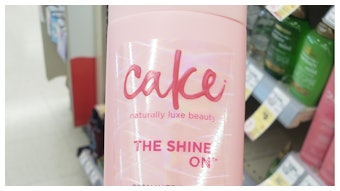Natural Fragrances
The International Fragrance Association (IFRA) only allows fragrances marked as "natural" to contain fragrance ingredients that correspond to the terms and definitions laid down in the International Organization for Standardization's ISO 9235:1997 (Aromatic natural raw materials – Vocabulary), or substances already present in them and isolated from them by purely physical means.
In general, ISO 9235 defines natural aromatic raw materials as being physically obtained from plants using distillation, expression and extraction. Synthetically reconstituted essential oils, synthetic nature-identical ingredients and intentionally chemically modified natural raw materials (e.g. chemical acetylation of essential oil) cannot be used in fragrance compounds that are described as being natural. The Natural Products Association goes one step further to not permit the use of petrochemical solvents in the extraction process, so concretes and absolutes made using hexane are not permitted. Natural fragrances are complex compositions of natural aromatic raw materials such as essential oils, fractions of essential oils, isolates, exudates such as resins, distillates, extracts and volatile concentrates.
Fragrance (Synthetic Fragrance)
Fragrances are complex compounds comprised of aromatic raw materials, at least one of which is not a natural aromatic raw material as defined above. A fragrance may contain natural aromatics in combination with synthetics, or could be 100% synthetic.
Synthetic aromatic raw materials have either been chemically created (mostly from petroleum), or started as naturals and have had their chemical structure modified. Synthetic aromatic raw materials fall into the categories of chemically modified natural raw materials, nature identical raw materials and aroma chemicals that do not exist in nature.
Chemically modified natural raw materials: The starting point for these materials is natural, but chemical processes (such as acetylation) have been employed to change the chemical structure of the raw material, rendering it non-natural.
Nature identical raw materials: These are synthetics, created through reactive chemistry that have the same chemical structure of naturals, but do not come from botanicals. Most often, the starting point for these aroma chemicals is petroleum. A good example is synthetic linalool, which is chemically identical to linalool that is fractionally distilled from lavender oil, but it is not derived from a plant.
Aroma chemicals that do not exist in nature: These are synthetic aroma chemicals produced through chemical reactions that have no corresponding natural aroma chemical. An example is methyl dihydrojasmonate, a soft diffusive floral note.
Natural vs. Synthetic Fragrance
Natural fragrances have greater perceived value as they are believed to be greener and more sustainable by many consumers. They are often perceived to be safer and more healthful and therapeutic. Some of these consumer perceptions are not necessarily accurate, but they drive demand for naturals. Natural fragrances are generally made from ingredients harvested from sustainably grown plants rather than from petrochemicals. Synthetic fragrances can be stronger, longer lasting, more complex and sophisticated and less expensive than natural fragrances. Although the palette of natural ingredients from which the perfumer can draw has increased substantially of late, there are many more synthetic aroma chemicals available, allowing the perfumer greater creative freedom. Synthetic fragrances are easier to manufacture as their components are more reproducible from lot to lot. Despite the technical advantages of synthetics, demand for natural aromatics continues to increase rapidly.










